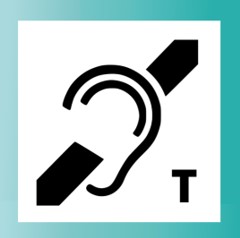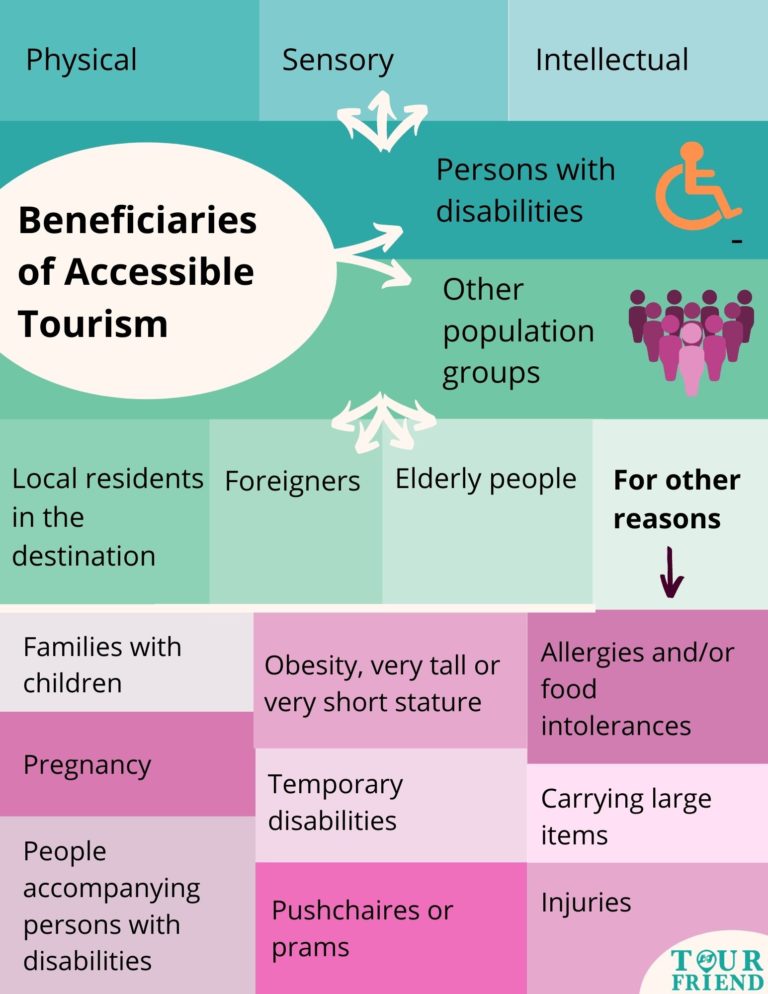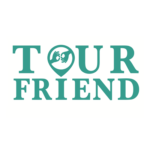The Erasmus+ project TOUR FR(I)END focuses on the accessibility of tourism for people with hearing impairment. In this article, we are going to look further at what accessibility means.
What is the first thing you imagine when you think about accessible tourism? Elevators and ramps at entrances and public transportation for people in a wheelchair? Audio recording for the visually impaired? Translator to be able to communicate with local services?
What do experts say about accessible tourism? There is no internationally agreed definition but in your country, you may be familiar with its synonyms eg. inclusive tourism, adapted tourism, Tourism for All, Barrier Free Tourism (BFT), Easy Access Tourism and Universal Tourism [1].
According to the World Health Organization in 2011 about 15 % of the world’s population, that is one billion people, suffered from some form of disability and 466 million people (over 5 %) worldwide are people with hearing impairment. Their prediction is that almost everyone will be disabled at some point in their life [3][4].
Ligsom [5] divides disabilities into two groups – visible and invisible. An invisible disability is a disability that is not immediately apparent to others, such as hearing difficulties or speech difficulties, and up to 70 % of disabilities are hidden [6]. People with invisible disabilities tend to hide their challenges not wanting to attract attention or of fear of being judged and excluded [5].
The project partners focus on developing tools to overcome the following barriers that people with hearing impairment encounter during traveling.
Common barriers for people with hearing impairment are [6]:
- Information and communication barriers, when verbal announcements at airports/stations are not transformed into text and/or information are not updated regularly.
- Lack of hearing (induction) loop systems which enable to amplify sound directly to a person´s hearing aid.
- Noisy environment and bad acoustics in the room affects a person´s understanding of language and disturbs a person´s hearing abilities.
- Bad lighting accounts for deteriorated conditions for lip reading.
- Evacuation procedures are often based on acoustic alarms which might not be registered by people with hearing impairment.
There are a few solutions for service providers [6][7]:
- In frequented public spaces as airports, bus/train/tram stations hearing (induction) loop system can be installed. Label it visibly!

- Caption all videos wherever possible.

- Provide transcripts of audio recordings
- Have note pad and pen ready in case of difficulties in communication.
- Have basic and important information prepared in the written form.
- And last but not least learn a few welcome signs in sign language
There are a few solutions for guides:
- Provide headphones for people with a preserved level of hearing during guided tour
- Provide guide scripts [6][7].
- Some people with hearing aids or cochlear implants have assistive listening device – FM systems that the tour guide can place in a pocket or around neck and then clips the lapel microphone to his collar. Person with hearing aid can hear crystal clearly what the guide says whether seeing the guide or not [8].
Besides hearing impaired, there are other groups of people who thrive in accessible environment – locals with the same conditions and many others (see the picture below). These changes will contribute to the overall rising living standards in that area [9].

Figure 2 Beneficiaries of Accessible Tourism [9]
Initiatives focused on accessible tourism:
Access-I is a Belgian website available in French, Dutch, German and English. It provides a list of different sites and attractions and how accessible they are for people with disabilities [10].
The French association Tourism and Handicap provides accurate and objective information on the accessibility of touristic attractions and sides for people with different disabilities (motor, visual, audio and mental). Services, which passed a labeling process of this association, guarantee an accessible reception of people with disabilities [11].
A Belgian initiative Altéo organizes accessible cultural and leisure activities for people with disabilities which are tailored to everyone´s needs [12].
Soon you will be able to read more about this topic in the different training guides of ERASMUS+ project TOUR FR(I)END which will be posted in the following months on projects website: https://tourfriend.eu/the-outputs/
References :
[1] World Tourism Organization (2016), Manual on Accessible Tourism for All: Principles, Tools and Best Practices – Module I: Accessible Tourism – Definition and Context, UNWTO, Madrid.
[2] Rifai, T. (2013, September 11). UNWTO Approves Accessible Tourism Recommendations. Retrieved October 27, 2020, from https://www.accessibletourism.org/?i=enat.en.news.1476
[3] World Health Organization. (2011). World report on disability.
[4] World Health Organization. (2020, March 1). Deafness and hearing loss. Retrieved November 04, 2020, from https://www.who.int/news-room/fact-sheets/detail/deafness-and-hearing-loss
[5] Lingsom, S.. (2008). Invisible Impairments: Dilemmas of Concealment and Disclosure. Scandinavian Journal of Disability Research, 10(1), 2–16. https://doi.org/10.1080/15017410701391567
[6] ELEVATOR project. (2018). Handbook for Guiding People with Special Access Requirements. (Project identifier: 2015-1-CZ01-KA204-014014). Retrieved from https://www.accessibletourism.org/resources/io2_english-final.pdf
[7] Deaf Travel And Deaf Friendly Tourism. (2020). Retrieved 27 October 2020, from https://www.buddythetravelingmonkey.com/deaf-travel-and-deaf-friendly-tourism/
[8] Bauman, N. (n.d.). How Can I Best Hear My Tour Guide?. Retrieved 3 November 2020 from https://hearinglosshelp.com/blog/how-can-i-best-hear-my-tour-guide/
[9] Fundación ONCE and Vía Libre (2009), Estudio de los requisitos de accesibilidad en las normas de calidad en el turismo europeo, Fundación ONCE, Madrid.
[10] ABOUT ACCESS-I. (n.d.). Retrieved from https://access-i.be/a-propos
[11] The National Tourism & Handicap label. (n.d.). Retrieved from http://ee.france.fr/en/information/national-tourism-handicap-label
[12] Accueil. (n.d.). Retrieved from http://www.alteoasbl.be/

Visit the Website: http://tourfriend.eu/ ![]() Follow the project on Facebook @tourfriendeu
Follow the project on Facebook @tourfriendeu
#TourFriend #erasmusplusproject
In collaboration with: LES APPRIMEURS, Challedu- inclusion | games | education, Citizens In Power (CIP), Enjoy Italy di Alessandro Gariano

